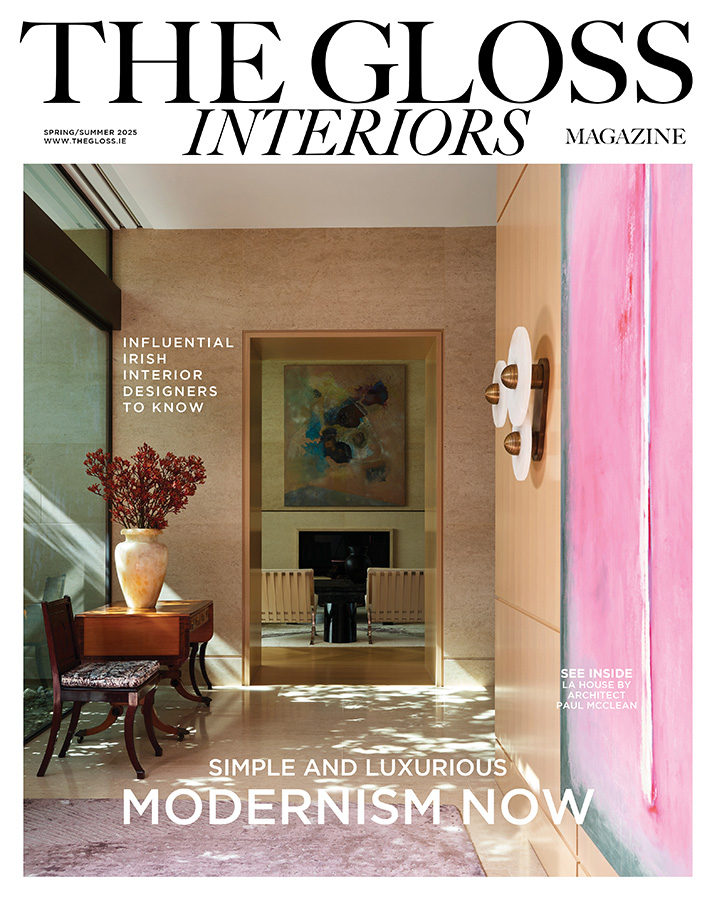Thomas Boog, the former head of design at Italian shoe brand Bally, has transferred his design skills to decorating his home in Poitiers, France, with his collection of shells sourced from around the world
There is a house in the Vienne region in France that is unlike any other. It is the home of Swiss-born shell artist Thomas Boog, whose wizardry with coquillage brings together the many thousands of shells he buys in bulk from all over the world. Some are small and simple, used on repeat. These gathered shells are used to populate walls in place of wallpaper or employed as jewels on a chandelier. Other, more fanciful specimens are used to conceive characterful wall sconces and marine masques. They’re such happy objects: artistic, charismatic, handmade and unique. Far from a nautical-themed villa by the sea, this shell-filled home harks back to the tradition of wealthy travellers in the 17th and 18th centuries, bringing back their finds, and proves that shells can be for the countryside, not just the beach.

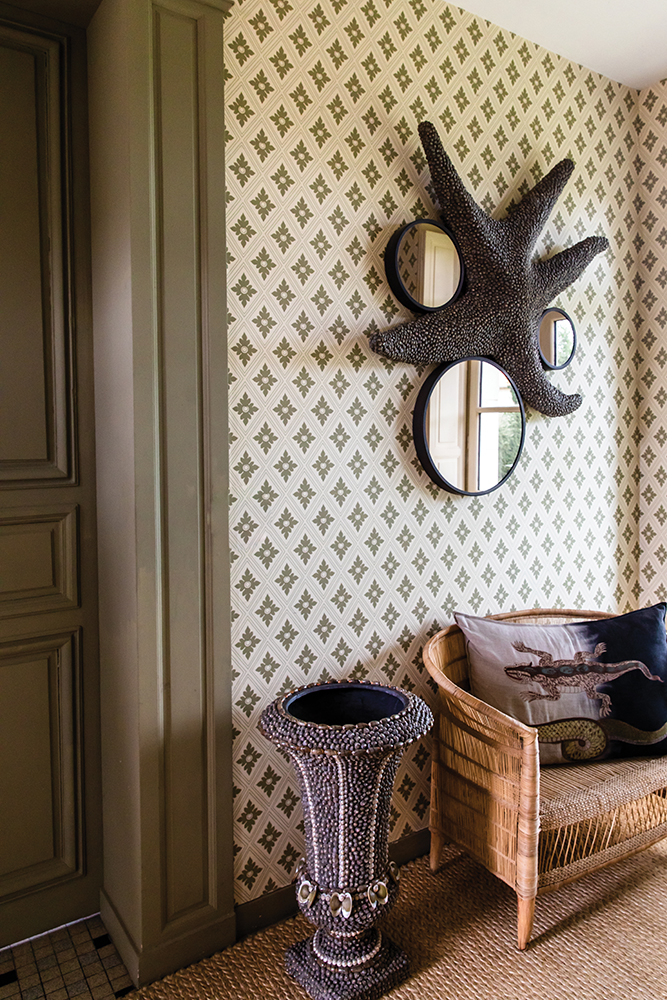
There is a primal instinct behind collecting shells with the intention of using them to make something else. For Boog, shell- encrusted creations are the continuation of an old tradition. These are not beach souvenirs, but high-end interior design that includes the octopus-like chandelier at the Philippe Starck-designed SLS South Beach hotel in Miami and a modern grotto featuring a mother-of-pearl ceiling at the Royal Monceau hotel in Paris. Boog’s side of the collector coin is defined by quantity, rather than a scientific “one of each”. If you consider an architectural project, a tremendous number of shells is required. This means buying by the kilo, as well as plenty of sorting and searching for the right shell to fit the right space. “That’s what makes it so interesting,” he says. “I’m not a scientist. To be a collector of that sort would mean entering a world that is a nightmare for me. My passion is for the beauty of shells. They are gifts from nature, and I want to make something with them.”

ABOVE Red-lacquered chairs and turquoise-painted walls deliver on drama and complement the glass-fronted cabinets that house Boog’s white coral collection. These cabinets of curiosities were custom-made and painted black to avoid a beach-house vibe.

ABOVE “I’m always using seashells to cover things,” Boog says of the encrusted chandelier in the dining room.
Transferring his skills as a shoe designer to cobbling shells – Boog was head of design at Bally throughout the 1980s and early 1990s – he thinks of them as a material. “Shoes have a great complexity,” he explains. “If you are good with shoes, you can design anything.” Starfish mirrors are a leitmotif. Boog likes the shape. “Not the “real” starfish though,” he is keen to point out. “You can’t avoid the smell.” His favourite shell is Turbo sarmaticus, found off the coast of South Africa, for its mix of colours with bright mother-of-pearl. Shells often come from people who give him their own collections. “They don’t know what to do with them,” he says. “This is the point.” His keepsakes are the curiosities – the too big, the too small, the mistakes – which are stashed in a pair of custom-made glass-fronted cabinets in the living room. The examples kept here are the rare and unusual ones. “If you take a razor clam for instance, the length is straight, but the width is curved,” Boog explains. “One shell in a million is curved along the length, too. It’s a freak of nature. When I find one like that, it’s like winning the lottery. It’s very rare.”These, he puts aside. “I’ve worked for 30 years in shells and have found only two.”

ABOVE Boog’s office is next to a large studio in one of the outbuildings on the estate. Covering an entire wall is a cabinet with wooden drawers, each marked with a shell, making it easy to remember what’s inside. “I like a drawer full of shells,” he says. “The quantity makes it interesting. It turns the shells into a material you can do something with.”
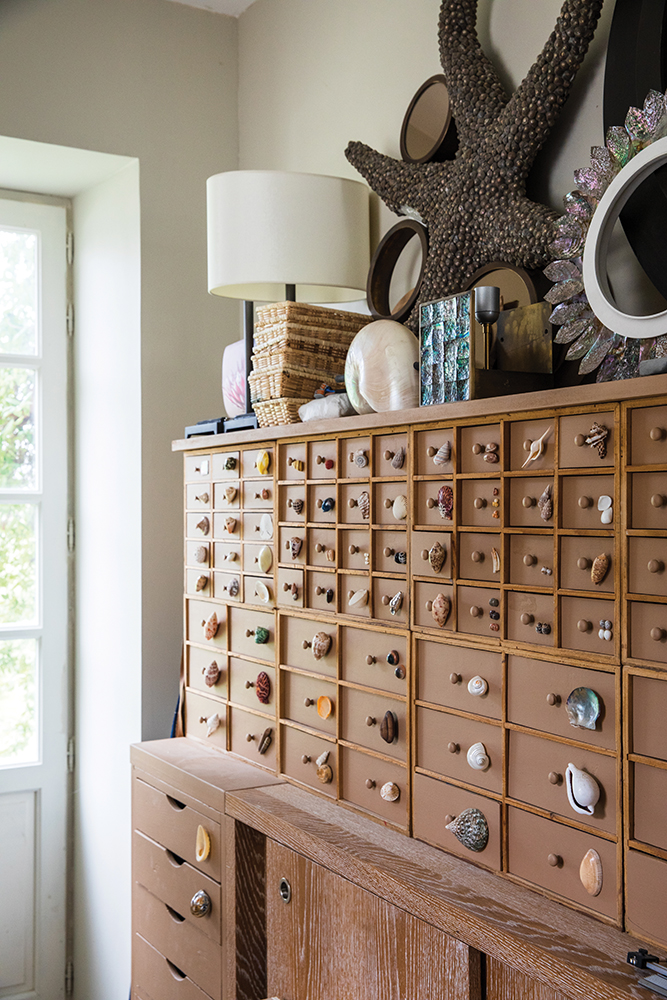


For Boog, shells have always been a point of reference in his life. Growing up in the mountains of Switzerland, a summer vacation to the beach was an exceptional thing – and proved particularly significant when illness prevented him from swimming in the sea one year. “I was obliged to stay on my sun lounger,” he says. “At that time, I looked more closely at shells. It was my only activity. I had all day to study and draw them, more so than the other girls and boys on the beach.” He also recalls how his grandfather was able to make miracles out of nothing, gathering sticks and leaves from the Swiss mountain paths to build tiny little chalets without using glue. Thus he learned that it is possible to create items of beauty with very little. “That’s the message,” he says. “You can collect shells and they don’t cost a thing, yet you can make something incredible. If you want to influence children and lead them towards an appreciation of art and nature, don’t take them to a museum. It’s too much. Instead, keep it simple – like my grandfather did.”

ABOVE A cabinet covered with razor clams: “I use clams as a precious material. The colours go from ivory to gold, almost like bamboo.”
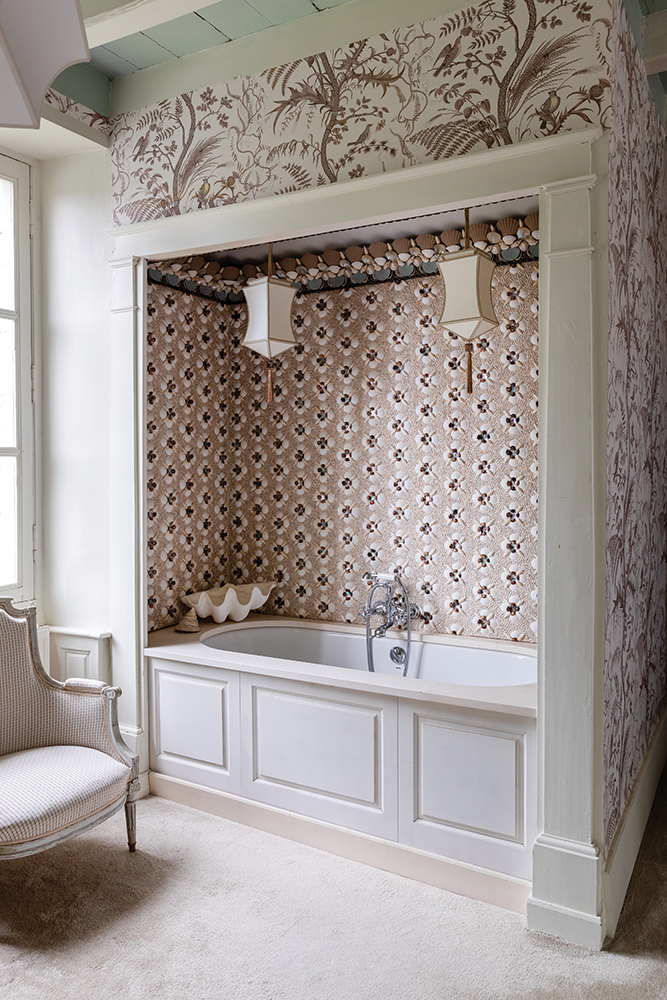
ABOVE In the bathroom, above the bath, Boog has meticulously lined up shells into a pattern resembling a Brunschwig & Fils wallpaper design.

THOMAS BOOG’S TIPS FOR DECORATING WITH SHELLS
1. Don’t be confined by the idea that shells are only for a beach house. This is the opposite of what people thought in the 18th century when shell finds were always brought into the home, whether coastal, city or country.
2. To avoid an overly beachy feel, paint cabinets and coffee tables black.
3. Start with colours: once the colour choice is made, everything else will find its place.
4. For a modern look, stick to a single colour. Small shells in white look particularly spectacular and work well in a contemporary scheme.
5. To create patterns, select the same size and colour of shell, such as a small and simple Umbonium costatum.
6. For any creation, don’t start with beautiful shells. These are enough on their own, and are difficult to use in any composition.
7. Making Christmas decorations from shells is a nice way to get children interested: beautiful items can be made with little fingers.
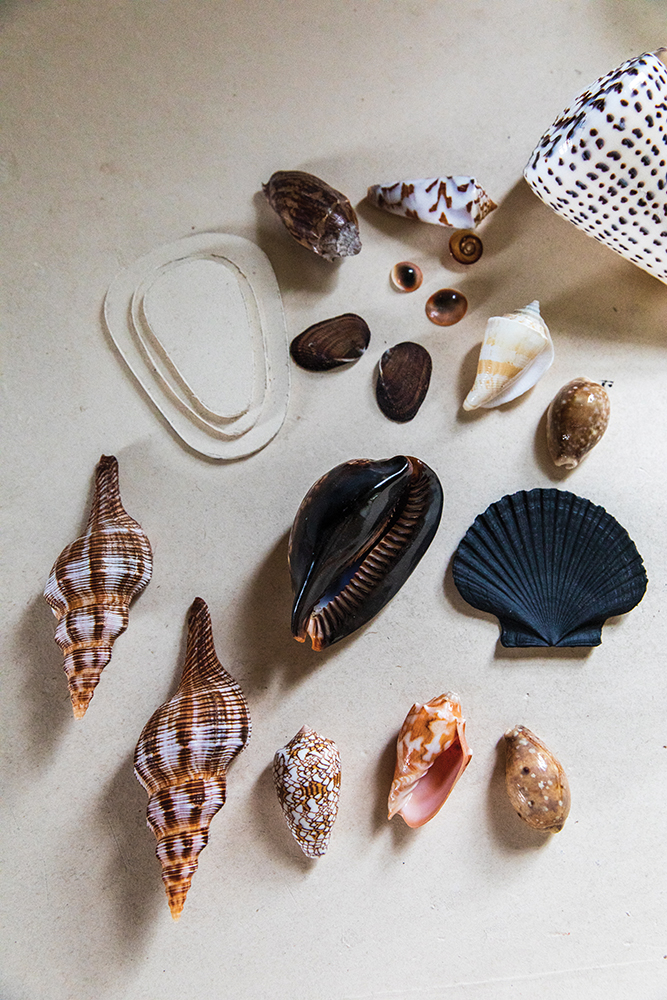
From: The New Naturalists: Inside the Homes of Creative Collectors, by Claire Bingham, Thames & Hudson.
Photography by Virginie Garnier



